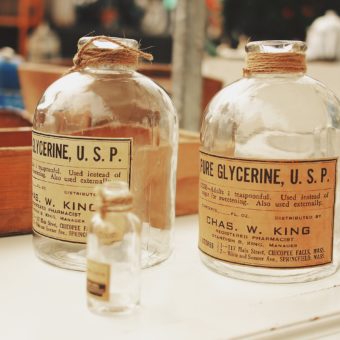The Surprising Difference Carrier Oils Can Make In Birth
 In one of my favorite books, The Healing Intelligence of Essential Oils: The Science of Advanced Aromatherapy, Kurt Schnaubelt writes: “we are worried about essential oils. They are seen as potentially too strong, but nevertheless we are concerned they will fail us when challenged by serious conditions. Somehow we thinking ‘medicine’ when we think of essential oils. We also think of doctors who disapprove.”
In one of my favorite books, The Healing Intelligence of Essential Oils: The Science of Advanced Aromatherapy, Kurt Schnaubelt writes: “we are worried about essential oils. They are seen as potentially too strong, but nevertheless we are concerned they will fail us when challenged by serious conditions. Somehow we thinking ‘medicine’ when we think of essential oils. We also think of doctors who disapprove.”
Isn’t that the truth?!
We’re afraid oils in birth will cause adverse reactions and be too strong.
We’re also afraid they’ll fail us.
If your results with a therapeutic application of essential oils are disappointing, one common mistake you might be making is that you’re the ‘wrong’ base.
Recently I asked someone who sold essential oils with an MLM company about carriers: does it help the oils absorb into the skin? I asked.
Yes, came the quick reply.
So, it drives the oils in quicker?
Yes.
But isn’t the reason you’re supposed to use them because it keeps the oils from sensitizing the skin when they’re absorbed too quickly?
Yes… came a slower reply.
So, does the carrier make absorption faster or slower?
She was confused.
You may be too.
I was also. Let’s back up for a moment. When attempting to get essential oils into the body, there are three application methods with their own physiologic process, pros and cons, and as you can see—significantly different absorption rates:
- Oral: 95% absorption into bloodstream
- Inhalation 50% (30-70%) absorption into bloodstream
- Topical 5% (1-10%) absorption into bloodstream
Did you have any idea there was such a wide range in oil absorption based on how you use them?!
When you use oils topically, the absorption rate is very low.
When you put them on area of the body with thicker skin, the absorption rate is even lower.
People will often say that essential oils are absorbed through the pores of the skin, although they don’t specify further what a ‘pore’ is.
There are two types of opening in the skin: sweat glands and hair follicles.
Sweat glands do not allow much absorption of essential oils because the water-based sweat repels the oil. Hair follicles allow for more absorption than sweat glands, but the primary way oils enter our skin is directly between the cells of the stratum corneum through the lipid matrix.
The primary route into the body intercellular.
Our Essential Oils Birth Consultant Certification teaches primarily a personal inhalation application strategy with only a few oils used for anti-inflammatory or analgesic effect. You should only use that strategy when a slow, continuous absorption over time is desired OR when a location specific issues is being addressed with oils such as lower back pain or you’re treated the skin, muscle, joint, or locational nerves.
The stratum corneum is thinnest on places like the face and scalp, it is the thickest on the palmer skin of the hands and the bottom of the feet. My experience as a massage therapist is that the palms of the hands (that have a thick epidermis and no hair follicles thank goodness) absorb almost nothing compared to the thinner epidermis of the massage client.
How many times have you heard to put oils topically on tbe feet with fractionated coconut oil? First of all, please never put oils on the feet of a very pregnant person unless they’ve had an epidural. But really, don’t waste your oils because the skin on your feet is so incredible thick the usual topical absorption of 5% is going to be much, much lower– and then if you’ve put the oil on in a fixed oil base, this isn’t ideal because essential oil constituents are fat-soluble.
When oils are in a lipophilic environment, they’re just going to stay on the surface of the skin.
Robert Tisserand did a wonderful training on pharmacokinetics where he showed the differences in absorption rates of a 5% dilution applied to inner forearm with different carriers. Look at that absorption difference:
- Oil: 11.3
- Lotion: 57.3
- Gel: 238.5
*Micrograms/cm2 after 60 minutes
Crazy right? When you add a carrier oil to oil you’re applying to the bottom of the feet– absorption rate is so low—it literally is the very safest topical application strategy.
But not great if you’re trying to get an effective therapeutic dose.
In the download, I’d like to share with you the gel Robert Tisserand and I recommend. It’s a water-based delivery system that causes movement of essential oil constituents into the skin because the sebum rich skin surface is more fatty than the gel and the essential oils move out of the water-based gel and into the oilier medium of the mothers’ skin surface.
Please download our complete guide to carrier oil for birth professionals to learn about gel carriers plus a listing of almost 20 other carrier oils detailed by Dr. Light Miller from the book Ayurveda & Aromatherapy: The Earth Essential Guide to Ancient Wisdom and Modern Healing. Enjoy!
